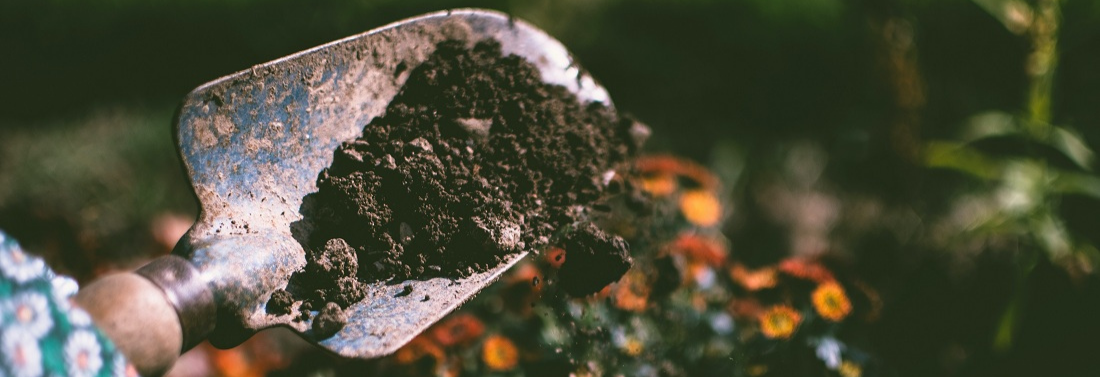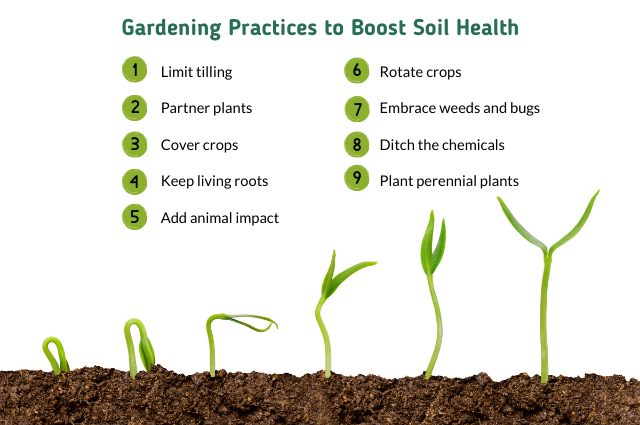6 Regenerative Practices to Apply to Your Home and Lifestyle
Sustainability alone is not enough to restore the damage humans have done.
Similar to recycling, which isn’t an adequate long term goal, sustainability maintains what already exists without degrading current systems. It’s a good approach, but it shouldn’t stop there.
Regenerative practices have extended results. When you combine regenerative with sustainability, the planet is supported through restoration and a culture that’s healthy, resilient and adaptable. Regenerative sustainability looks at how our natural systems are impacted by humans and finds ways to regrow, renew or restore.
To go regenerative is to build health into the system. You can design regenerative cultures in your business, home and lifestyle which improve your own health, and the health of the community, animals, plants, waters and climate.
Here’s how to get started.
1. The Soil Solution
Restoring the health of soils is the first step in regenerative sustainability.
According to Kiss the Ground, an initiative that looks at the healing powers of soil, it’s preserving the carbon in the soil which could curve the climate crisis.
By increasing soil health, you reduce the loss of vital carbon to build crop resilience and nutrient density. Perfect for growing your own food at any scale.
Regenerative sustainability is a holistic approach that nurtures the soil and leverages the power of photosynthesis in plants. It means letting nature do the work. Returning nutrients to the ground is the ultimate way to feed the microorganisms that work together to draw carbon dioxide from the air and grow nutrient-rich foods.
2. Use Regenerative Farming Methods in Your Garden
It’s easy to forget soil is more than dirt.
Soil is a living organism that needs nutrients to thrive. Yet dirt, the soulless result of conventional agriculture, is eroded by chemical poisons.
Regenerative agriculture focuses on increasing the organic matter in soil used to grow vegetables.
To boost soil health (and ultimately increase the health of everything else) there are simple techniques to use in your backyard or office garden, regardless of its size.
- Only use minimum to zero tilling
- Partner plant with diversity eg: plant flowers with your vegetables – marigolds and herbs make useful companion plants
- Cover crops to restore soil nutrients eg: mulch and organic matter (composting)
- Keep living roots in the soil for as long as possible, ripping these up can disturb the soil’s ecosystem
- Add animal impact eg: manure, small livestock such as chickens or rabbits
- Rotate crops
- Embrace (some) weeds and bugs eg: only pull weeds near plants that are overtaking their nutrients
- Ditch the chemicals
- Plant perennial plants like orchard fruits and nuts
Using these regenerative habits in your garden means you can;
-
- Reduce soil disturbance
- Maintain soil structure
- Stimulate plant growth
- Improve the soil’s water cycle and water retention
- Create an armour and limits bare soil, which is susceptible to moisture loss
- Restore soil energy
- Prevent lingering diseases
- Keep a healthy balance in your garden’s ecosystem
3. Eat a Low-Carbon Diet
A low-carbon diet is about making better lifestyle choices to reduce greenhouse gas emissions.
Low-carbon food encourages long-term sustainability and balanced, flexibility eating that’s good for you and the planet. Animal products, particularly beef, pork, lamb and cheese, are the top culprits responsible for greenhouse gas. Fish, poultry and eggs have a much lower impact. Yet they’re still more than plant-based and vegan alternatives like tofu and nuts.
It doesn’t mean you need to take an all or nothing approach. For many, reducing meat is a more realistic goal than going vegan – and it still makes a difference.
Staples of low-carbon eating include:
-
-
- Reduce food waste (any scraps should be used as compost)
- Choose local, organic and seasonal (this also helps to retain more carbon in soil)
- Limit processed and packaged foods
- Move away from beef and dairy
- Avoid importing foods from overseas (air-freight food adds Co2)
-
Learn how to shop smart and calculate your personal foodprint here.
Tip: Have a business? Take your low-carbon eating to the next level by making your business carbon-neutral.
4. Switch to a Regenerative Super Fund
Divesting from fossil fuels is something more people are prioritising.
By supporting a superannuation fund that doesn’t invest in fossil fuels, you’re encouraging regenerative practices in business and lifestyle areas.
Some funds that get the green tick are Australian Ethical, Verve Super and Future Super. See where your fund stands.
Tip: Actively invest in companies who are clean, ethical and use initiatives that support the planet, people and animals. Consider your bank and businesses you engage or work with. If you’re looking for a fund to financially support, choose a not-for-profit business that cares for the environment. One Tree Planted, Greening Australia and WWF are great places to start.
5. Watch What Your Wear
The health of you and the planet doesn’t stop with soil, food or fossil-free funds.
To reduce human’s reliance on oil, the main ingredient in synthetic clothing, it’s important to watch what you wear. Regenerative fabrics are materials that are natural and sustainable.
Swap synthetic plastics in clothing with:
-
-
- Recycled cotton
- Organic hemp
- Organic linen
- Bamboo linen
- Satin over silk
- Reclaimed or recycled fabrics
-
There are many regenerative practices to incorporate in your home, business and lifestyle. Start small and work your way up. What habits will you be trying? Share your ideas or comments below!
Author Bio
This article is written by Jayde Walker – an Australian copywriter and small business owner who writes in
the travel, lifestyle and sustainable industries. Catch her on LinkedIn.





